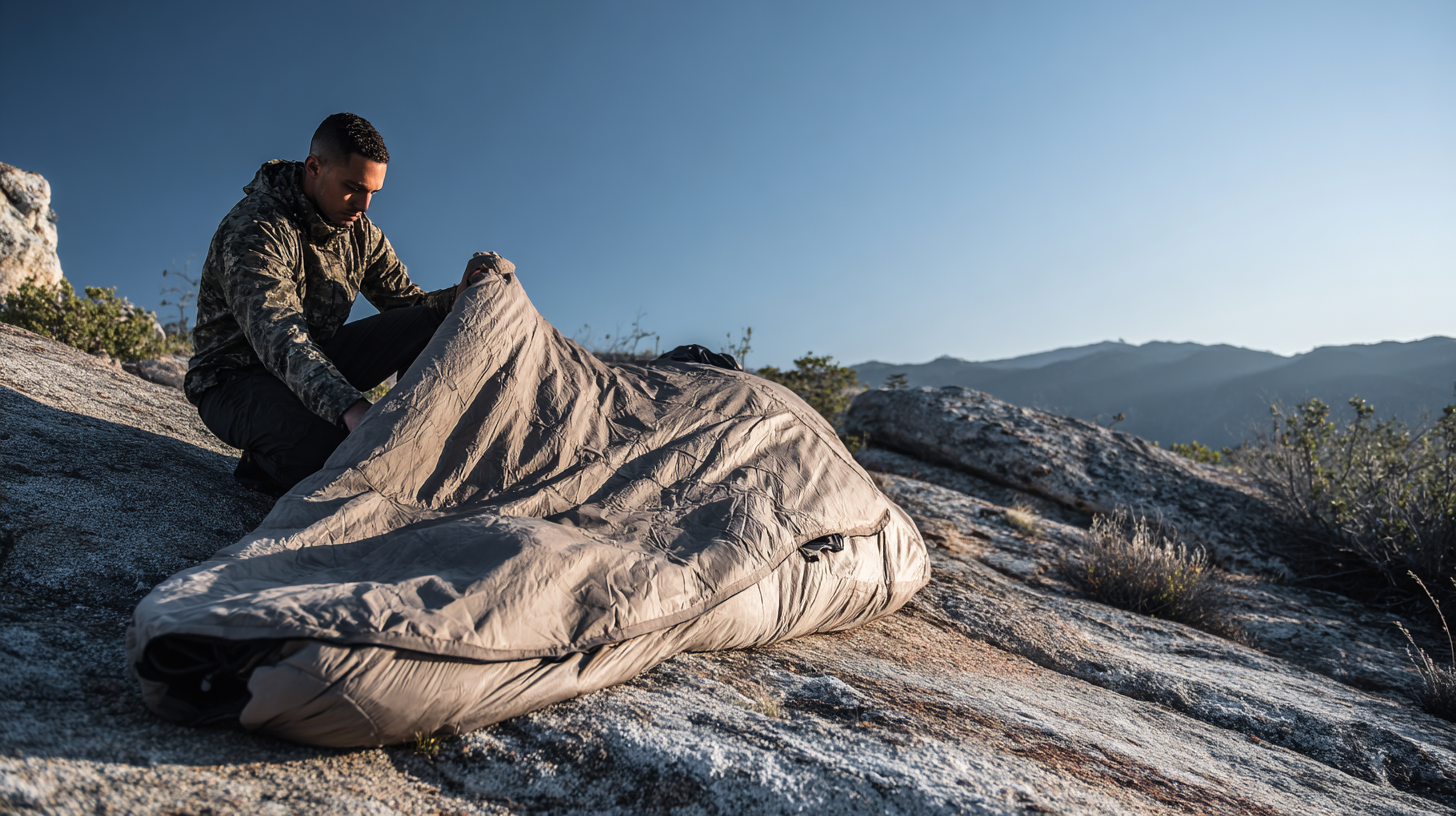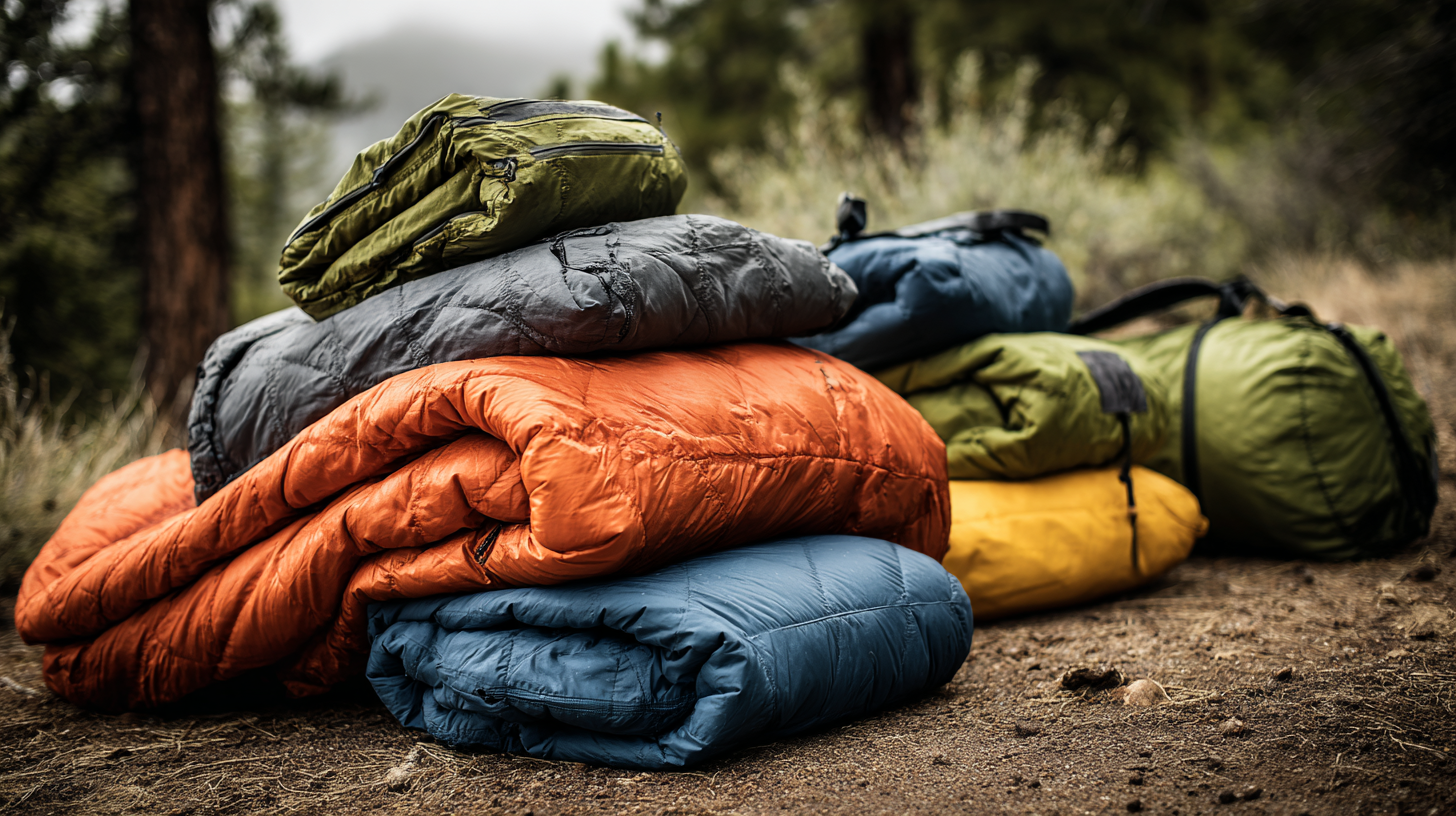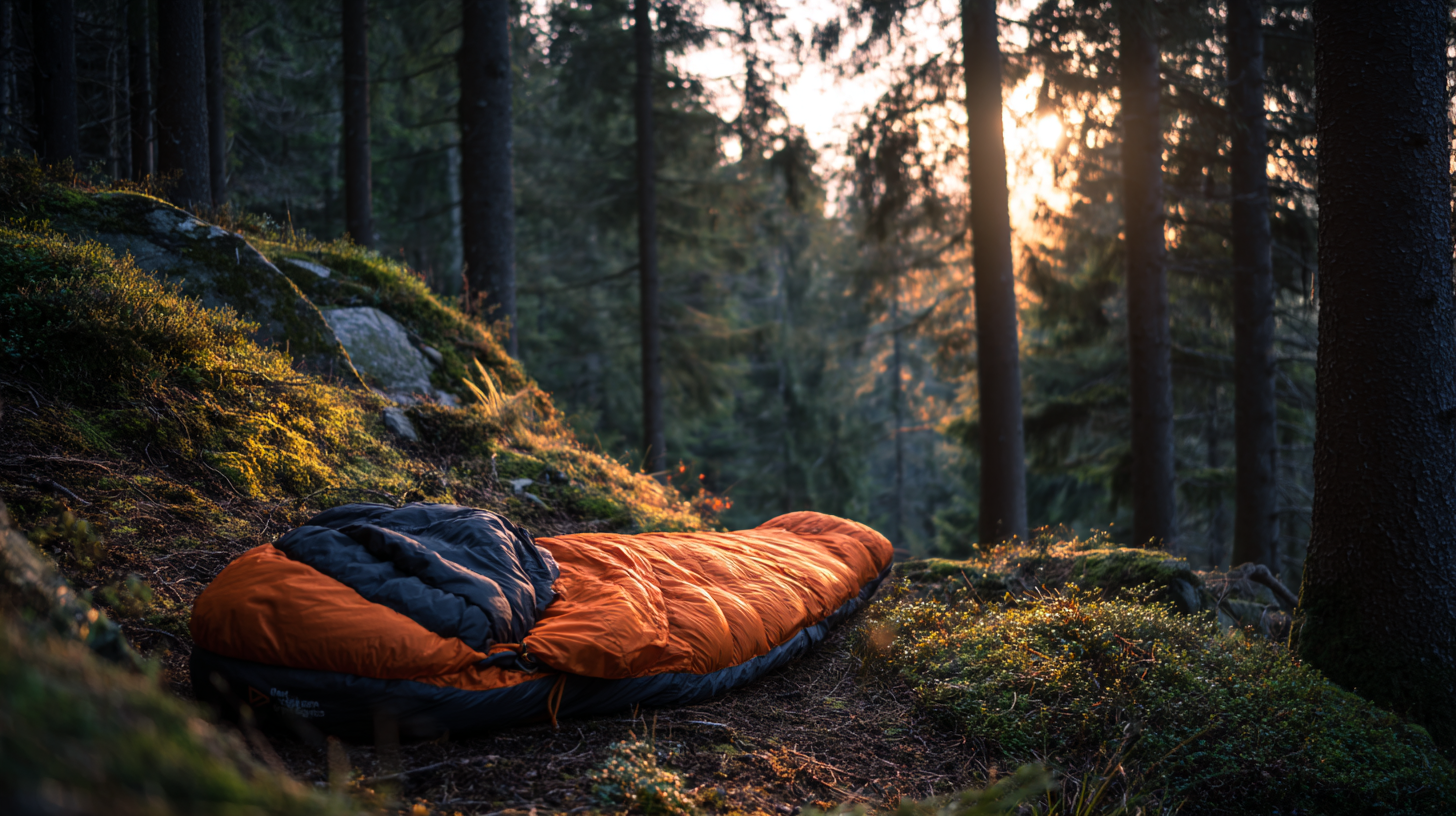Leave Your Message
-
E-mail
-
Whatsapp
When it comes to outdoor adventures, having the right gear can make all the difference, and choosing the top sleeping bags is no exception. With a plethora of options available, finding quality manufacturers and solutions becomes essential for ensuring a comfortable night's sleep in the great outdoors. This blog will explore the key factors to consider when selecting top sleeping bags, highlighting the importance of insulation, materials, and design. We will delve into the leading brands known for their craftsmanship and reliability, guiding you through the process of making informed choices. Whether you're a casual camper or an ardent backpacker, our insights will help you navigate the market and discover the perfect sleeping bag tailored to your needs. Join us as we uncover the best options available that promise not only comfort but also warmth and durability for your next adventure.

Quality is paramount when it comes to sleeping bag manufacturing. According to a report by the Outdoor Industry Association, the sleeping bag market generated approximately $340 million in revenue in 2022, underscoring the importance of choosing reliable manufacturers. High-quality sleeping bags not only ensure better insulation and durability but also enhance the overall camping experience. Products made with superior materials, such as high-fill down or advanced synthetic fibers, can significantly improve warmth-to-weight ratios, making them indispensable for both casual campers and serious outdoor enthusiasts.
Tip 1: Always check the insulation type. Down insulation, while lightweight and compressible, requires special care for moisture management. Synthetic insulation, although bulkier, performs well in wet conditions. Choose according to your adventure needs.
When sourcing sleeping bags, it's essential to scrutinize the manufacturing processes. A survey by the Cotton Incorporated Lifestyle Monitor™ found that 72% of consumers consider sustainable practices when choosing outdoor gear. Manufacturers that prioritize environmentally friendly techniques often produce higher-quality products. This longevity not only benefits the consumer but also contributes to environmental conservation.
Tip 2: Research the manufacturer's certifications. Look for organizations that adhere to industry standards, such as the Responsible Down Standard (RDS) and bluesign® for sustainable textiles, which ensure ethical sourcing and minimal environmental impact.

When choosing a sleeping bag manufacturer, several key factors should be taken into account to ensure you're selecting a quality product that fits your needs. First and foremost, consider the manufacturer's reputation in the industry. Look for brands that are known for their reliability, innovation, and high-quality materials. Reviews from other customers can provide valuable insights into product performance and durability. A manufacturer with years of experience often has the expertise to produce sleeping bags that can withstand various camping conditions.
Another crucial aspect is the range of options the manufacturer offers. A good sleeping bag should cater to different weather conditions, sizes, and user preferences. Pay attention to the insulation types used, such as down or synthetic, as well as features like weight and packability. Manufacturers that allow customization or offer a variety of models may also be advantageous for outdoor enthusiasts seeking specific functionalities. Finally, ensure the manufacturer adheres to sustainable practices, which reflect a commitment to environmental responsibility while still delivering high-quality sleeping bags.
Sourcing sleeping bags from trusted Chinese manufacturers offers a wealth of benefits, particularly in light of the shifting global supply chain landscape. As businesses seek stability in their supply chains, China remains a key player due to its established manufacturing capabilities. Reports suggest that around 42% of enterprise-scale companies are now adopting advanced manufacturing technologies, including AI, to enhance productivity. This trend underscores the potential for manufacturers in China to leverage innovative practices, contributing to improved product quality and efficiency.
Moreover, with the rise of Southeast Asia as an emerging manufacturing hub, companies are diversifying their sourcing strategies. The region's logistical advantages and competitive labor costs position it as a viable alternative to traditional manufacturing bases. By sourcing from reliable Chinese manufacturers, businesses can tap into these evolving supply chains, ensuring they remain competitive in a dynamic marketplace. The importance of effective supply chain management cannot be overstated, as it is crucial for reducing costs and boosting overall efficiency—factors that are increasingly vital in today's hyper-competitive environment.
When selecting a sleeping bag for diverse outdoor conditions, it's essential to evaluate its features meticulously. Insulation type, temperature rating, and weight play pivotal roles in determining the bag's suitability for your camping adventures. Down sleeping bags are renowned for their lightweight and compressible nature, making them ideal for backpackers venturing into colder climates. Conversely, synthetic bags offer moisture resistance and maintain warmth even when wet, making them perfect for damp conditions or beginners unfamiliar with gear care.
Another critical aspect to consider is the sleeping bag's shape and size. Mummy-shaped bags excel at heat retention, hugging your body snugly, which is perfect for cold nights in the wilderness. However, if you prioritize comfort and space, a rectangular design might be more suitable, especially for family camping scenarios. Additionally, look for features like draft collars, zippers, and hoods as these can significantly enhance your sleeping experience, keeping you warmer and ensuring a restful night outdoors. By weighing these factors, you can find a sleeping bag that meets your unique outdoor needs and preferences.
| Model | Temperature Rating (°F) | Weight (lbs) | Fill Material | Pack Size (inches) | Water Resistance |
|---|---|---|---|---|---|
| Model A | 20 | 2.5 | Down | 14x6 | Yes |
| Model B | 30 | 3.0 | Synthetic | 16x7 | No |
| Model C | 15 | 2.0 | Down | 12x5 | Yes |
| Model D | 25 | 3.5 | Synthetic | 18x8 | Yes |
In the competitive market of outdoor gear, innovative solutions in sleeping bag design and production techniques are transforming how manufacturers approach comfort and functionality. Advanced materials, such as moisture-wicking fabrics and lightweight insulation, are becoming commonplace, enhancing the user experience during camping trips or outdoor adventures. These materials not only provide superior warmth but also improve breathability, ensuring that hikers and campers can enjoy rest without the worry of overheating while remaining cozy in colder climates.

Moreover, companies are now adopting cutting-edge manufacturing methods, including 3D knitting and automated stitching processes. These advancements allow for more precise fits and reduced waste, aligning with sustainable production goals. Customization options are also on the rise, enabling users to choose sleeping bags that best suit their needs, from varying lengths and widths to unique color and design choices. As manufacturers embrace innovative techniques, the sleeping bag market is set to offer products that are not only high-quality but also tailored to specific user preferences, ensuring that adventurers can find the perfect sleeping solution for any journey.
